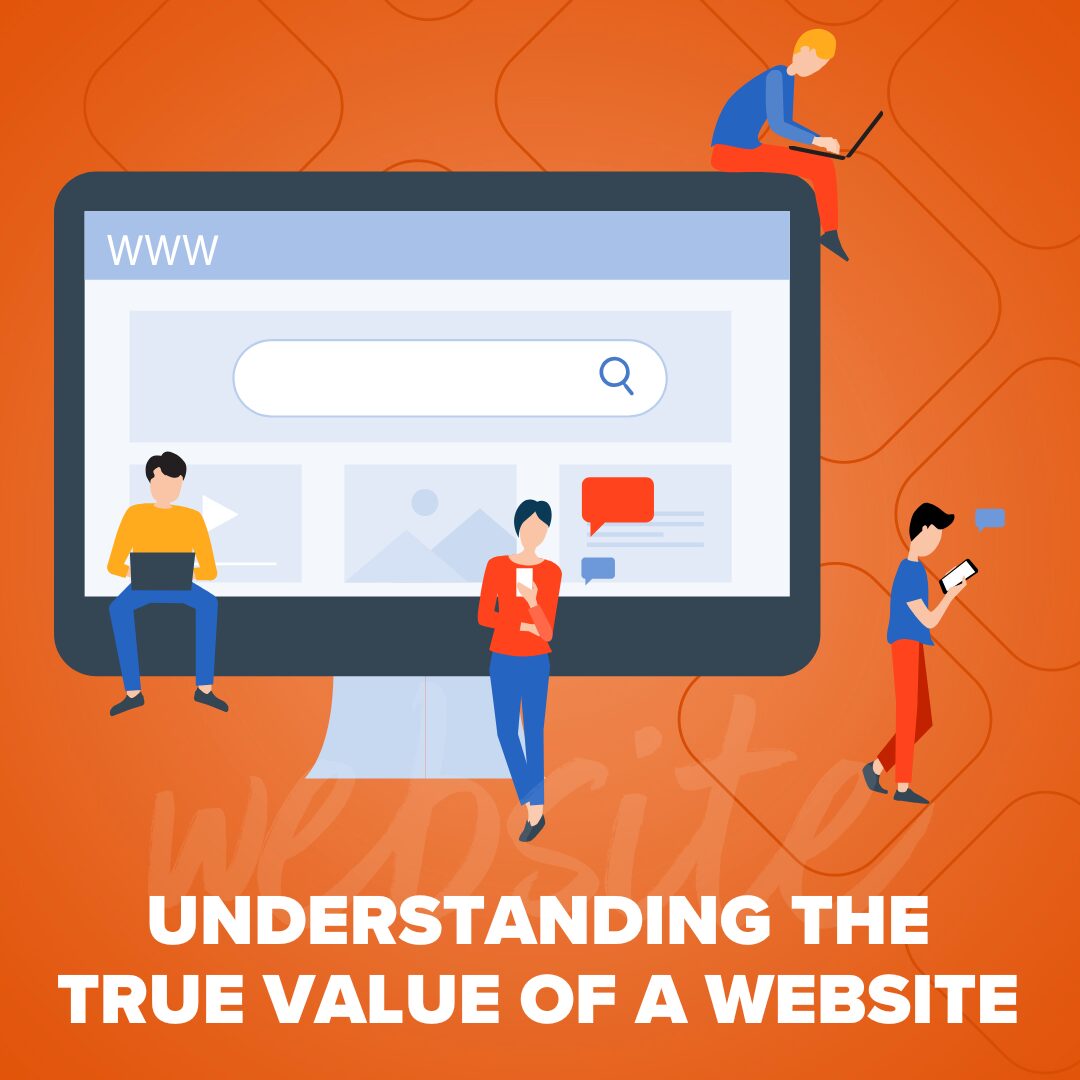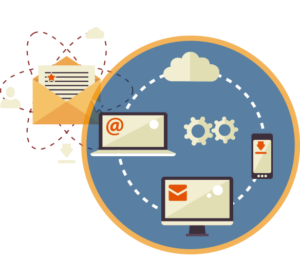
Understanding the True Value of a Website
Your website isn’t just a pretty online brochure. It’s an investment, a 24/7 salesperson, and the heartbeat of your online…
Read More
Integrated digital marketing strategies are a cornerstone of business outreach and brand-building. The good ol’ days of door-to-door salesmen, snail-mail flyers, glitzy highway billboards, and 30-second radio ads can’t cut it alone anymore. We live and breathe the internet. If we’re not Googling away on our desktops/laptops, we’re happily browsing on mobile – not to mention the hours and hours we spend on social media.
And while digital ads and social media campaigns are essential components of your marketing strategy, don’t overlook the power of email marketing. As our Director of Account Services, Andrea Macino, once said, “a solid email marketing campaign is one of, if not the, best ways to connect with an audience who actually WANTS to hear what you have to say. So, we’ll dive into why email marketing is important, and give you some good ideas for a sound email marketing strategy.
 Email marketing is a crucial digital strategy for any size and any type of business. We’ll get into the why in a little bit, but essentially, email marketing gets at a target audience that, in most cases, has willingly given you their email address – and opens a door for valuable conversions.
Email marketing is a crucial digital strategy for any size and any type of business. We’ll get into the why in a little bit, but essentially, email marketing gets at a target audience that, in most cases, has willingly given you their email address – and opens a door for valuable conversions.
It is a form of direct marketing that can promote or educate. It can inform, raise awareness, urge action, or supply offers. Emails generate leads, support your brand, and build customer relationships.
Welcome emails are directed at newcomers. They might be first-time customers who just purchased a product from you; they might be new subscribers to your newsletter; they might have signed up for an online course or in-person event – there are hundreds of firsts.
Welcome emails can be easily personalized, show your appreciation, and are a great introduction to your brand, culture, mission, and benefits. Its main purpose, of course, is welcoming them to your inner circle and thanking them for their interest – but it’s also an easy way to suggest other products, services, or events they may like as well.
Newsletter emails are great for building and maintaining brand awareness. The people you’re sending to have willingly subscribed to your newsletter, or they are (or were) a customer of yours. They’re probably open or, even better, interested in what you have to say.
Newsletters are a great opportunity to showcase your expertise, elevate the customer experience, build your brand identity, and educate your audience about services, products, and offers. Don’t forget those all-important CTAs for those all-important conversions!
These popular emails are targeted at one specific action:
Standalone emails are usually focused on a specific call-to-action, and in some cases, focused on a specific segment of your audience.
Lead-focused emails might be the most challenging of all. You’re usually going after someone who isn’t that familiar with you or your business yet. They may be cold or warm leads (e.g. you received the email from a source other than your audience, or you received the email from a lead-generation form). Either way, time is of the essence!
Before getting started on lead-generation emails, make sure you’ve identified your target audience. Create a relevant and appealing offer they’ll want to snap up. Keep your emails simple in design and message. Short and sweet is best!
Sponsored emails are similar to digital ads and lead-focused emails in investment and purpose. You are paying another business or organization to include a promo for you – usually in a newsletter or standalone email.
If this is a digital strategy for you, you should carefully select your partner based on their audience, reputation, credibility, and even their own email marketing strategies or campaigns.
Obviously, if you’re selling kitchen appliances, you won’t want to do sponsored emails with an auto parts supplier. Or, if they send subpar emails, you don’t want to associate your brand with campaigns that don’t deliver. But, if you develop great partnerships with other businesses or even clients, this is a great option to generate new interest, leads, and conversions.
Like your mother taught you – it’s always polite to say, “thank you.” Whenever a user signs up for anything or purchases anything or even downloads a demo, show your appreciation for their investment of time or money.
Transactional emails are usually automated, but also detailed and informative. People expect these emails when they sign-up or purchase something: dates/times/place, directions, agenda, total cost, and expected delivery. They may also contain second or final steps in the sales funnel: confirming an email or registration or clicking a link for login info. If you can set up these automated emails to suggest new products, services, events, etc. – even better!
Have any long-lost customers? Email marketing is a great way to reach out and reconnect with them. There are a few reasons why you should care about customers who haven’t interacted with you in a while, but the top two are:
Reason number two is why it’s a great idea to include a brief survey or review request in these emails. Knowledge is power. You can’t fix what you don’t know is broken.
Other ideas for win-back emails are to use some recent good news like an award or charity event to grab their interest, or include a limited-time offer to entice them back onto your site.
With online shopping dominating the market even more since the pandemic, savvy shoppers rely on user reviews before making final decisions. Whether it’s consumer reviews for a new car, a new restaurant, a fashion boutique, a neighborhood salon, a financial institution, or a doctor’s office – people value reviews, and beyond a store or brand’s site itself, they will find third-party sites that deal in reviews.
Reviews are also great for local SEO and building domain authority. That’s why review request emails are a great strategy for getting them added to the main sites people frequent. Target this email blast to loyal customers who seem satisfied with your product or business. Negative reviews are no fun, and you can try avoiding these by focusing review requests to repeat, happy customers.
 If you want to know why email marketing is important for your digital strategy or how it’s beneficial – just look at some numbers!:
If you want to know why email marketing is important for your digital strategy or how it’s beneficial – just look at some numbers!:
Why do a majority of marketers consider email marketing more important than social media? It comes down to user intent. People use social media for brand/customer engagement, not necessarily to take a trip down your sales funnel. Email marketing is better for driving traffic to your website and initiating conversions.
Well, now that you know the why – what about the how? We have some advice and tips for crafting a reliable (and profitable) email marketing strategy:
If you’re convinced, but you don’t know where to start or where you’ll find the time – we can help. As a full-service digital agency, Ironistic can not only help with your digital strategy, we can implement email or integrated marketing campaigns, and even help design and develop the sign-up feature for your website. Let’s get to work!
Connect With Ironistic
Comments
There are currently no responses.